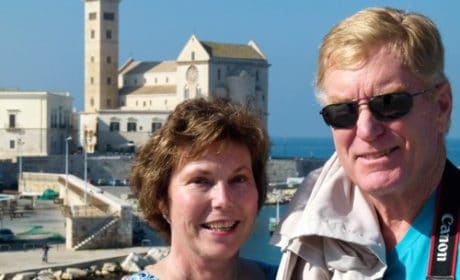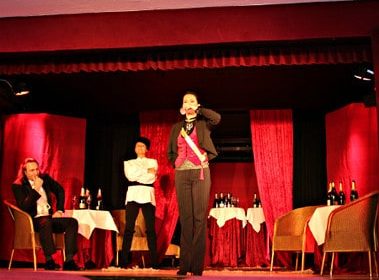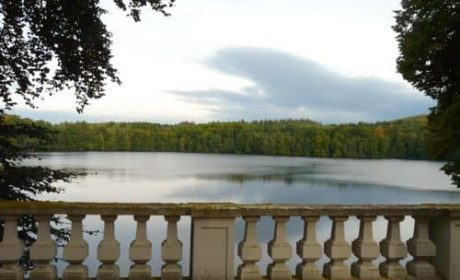Along with most travelers, our love for Italy never stops growing. From the chaotic charm of Rome to the quiet sophistication found in Tuscan villages, it seems as if there is an endless amount of Italian destinations to fall in love with.
But it’s the lesser-known destinations that are our favorites. Guest contributor, Naomi Elster, is here to tell us all about her recent journey to the lovely Bergamo, without a doubt one of North Italy’s most beloved sites.
Perhaps one of the greatest modern injustices done to the bewitching city of Bergamo was the mass marketing of its local airport, Orio al Sergio, as “Milan Bergamo”. Linking its proximity to the transport hub that connects Northern Italy to the rest of the world is certainly useful, but Bergamo more than holds its own as a destination in its own right.
Bergamo is enchanting all year round whether you wander the medieval walled town through November mists or look out over the bustling and vibrant modern city below in the height of summer. Being compact and easy to get to, it’s perfect for exploring on your own.
Cittá Bassa, Modern Metropolis
Although Bergamo is officially one city, having visited several times I can’t help but think of it as two. The modern metropolis of the modern city, known locally as the Cittá Bassa, is stylish and modern, and has a vibrant feel at weekends.
Although there are many more interesting sights in the medieval walled town, Cittá Bassa is a good place to shop. I’ve got some great bargains there, especially on shoes and boots.
Cittá Bassa also boasts several excellent restaurants, selling the Italian staples of fresh pizza and pasta. But don’t miss tasting Casoncelli alla Bergamasco, a local delicacy of meat-filled pasta in a rich sage and butter sauce.
Another local specialty is polenta, a stodgy cornmeal dish which enjoys a perplexing popularity. I’ve always thought of it as the exception to prove the rule that Italian food is excellent.
I just can’t get any flavor out of it unless it’s drowned in meat juices, and the sandy texture doesn’t do it for me either. Polenta can often be seen fashioned into shapes such as miniature houses in shop windows – charming to the eye if not the taste buds.
In winter, the Cittá Bassa hosts a small but beautifully put together and well-stocked Christmas market. You’ll find handmade decorations, some clothing, the posh soaps that seem to be in fashion at such things these days, and plenty of local food.
Boomer Travel Tip
MedjetAssist Members who are hospitalized 150 miles from home receive medical transport to a home-country hospital of choice. Memberships from $99.
Cittá Alta, Medieval Marvel
The medieval Cittá Alta is easily and cheaply reached by the city bus, or, if you fancy a stroll, on foot (just bear in mind that it’s called Cittá Alta – ‘high city’ for a reason!) But taking the old-fashioned funicular up the hill is very much part of the Bergamo experience.

The medieval walled town of Bergamo has such a surreal, fairytale feel to it that I often find myself surprised by the fact that many Italians do live here. However their cars do look out of place on the winding, cobbled streets.
Finding accommodation in Cittá Alta has become easier in recent years thanks to vacation rentals (look at this selection). Last year, my family and I stayed in a beautiful apartment where the owner baked us a cake and let us stay until six p.m. for free due to our late flight on departure day.
A few months ago, when passing through the city for a night, I got a great deal on a room in La Luna Blue, a hotel which shares a building with the funicular. The views from my bedroom window were spectacular, and the whirring of the funicular as it passed under my window at night was better than any lullaby.

Piazza Vecchia
When Bergamo was part of the Venetian empire, Venice built high walls to keep Milan out. Now, the historic center of Cittá Alta is so well preserved that, despite the tourists crowded into the narrow streets year-round, it feels as if those heavy stone walls have somehow kept the pace of modern life out.

One of the advantages of the Cittá Alta is that it’s easy to walk around and to navigate. Almost all roads lead to the Piazza Vecchia, a grand square flanked by several historic buildings including the Palazzo de Ragione (one of the oldest official buildings in Lombardy), the Campanone bell tower, and the Palazzo Nuovo (“New Palace”), home to a library housing ancient books, engravings and manuscripts dating as far back as the 1500’s!

In what was once the center of political power in Bergamo. You very much feel in the presence of history, but there’s a youthful feel to the Piazza, especially on summer nights.
Students at the local university and younger travelers often sit along the wall of the Palazzo Nuevo to chat, licking an ice cream or eating a takeaway pizza slice (such as from the excellent Il Fornaio, just a minute’s walk away).
The Piazza Vecchia is also home to a number of restaurants and cafés. It’s a perfect place for the typical Italian breakfast of a coffee and a slice of cake as you look out on the beauty of one of the few open spaces in Cittá Alta, watch the water dribble from the mouths of the lions in the central fountain, and soak up the relaxed atmosphere.
On Sunday mornings, however, not everyone is relaxed; you occasionally see groups of lycra-clad cyclists soldiering up the steep cobbled streets. They sometimes stop off in Piazza Vecchia for a breather and an espresso or, as the Italians call it, “Café normal.”
La Rocca

For one of the best views in Italy, I love to climb up to La Rocca, a hilltop fortress above the old town. There is a funicular which will take you most of the way, but the last time I visited Bergamo was at the end of ten days of lazy overindulging, and I thought it would be good to feel my muscles working again.
Unfortunately, I made the ultimate rookie mistake and didn’t bring any water. Pleasant heat very soon became uncomfortable as the hill became steeper and my throat tortuously dry – at least the view was stunning, and frequently stopping to admire it is a good excuse for a rest!

The fortress itself is interesting, but small. The main attraction is the view, especially from a grassy patch at the top of one of the towers, where you can lie out and catch some sun, or take a picnic.
However, if you fancy eating less casually, there is an excellent restaurant at the top of the La Rocca funicular, which serves some of the most mouth-watering pasta and meat in Italy and where you can dine on a terrace overlooking the old and new towns of Bergamo and the beautiful rural landscape surrounding them.
Bergamo museums
The composer Donizetti is one of Bergamo’s most celebrated sons. The local theater bears his name, and he is commemorated in a small museum just behind the Piazza Vecchia.
The quirky Donizetti Museum is housed in a 13th century palace that is worth a visit for its own sake. The palace is home to interesting portraits, hand-written scores, the composers piano, and the terribly sad sight of the adapted chair in which he spent the final days of his life.

The natural science museum has a spectacular range of animals on display. With superb artistic reconstructions of prehistoric landscapes and many interactive exhibits and touch panels, it would be a great place to bring kids. Your ticket for the science museum also covers the archaeology museum, housed in the same citadel, which provides information in English.



